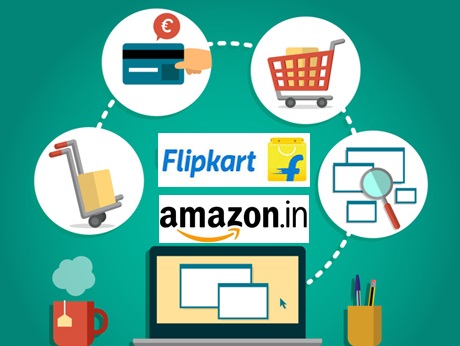March 31 2019: Amazon is the current leader in India's e-commerce market, where it racked up $8.8 billion in sales in 2018, but Flipkart is poised to overtake it for the top spot by 2023, according to data from Edge by Ascential sent to Business Insider Intelligence.
Flipkart is set to see $14.9 billion in online sales by 2023, up from $8.1 billion in 2018, besting Amazon's forecasted $11.7 billion. This would be a boon for the Walmart-owned e-commerce company, as India's e-commerce market is projected to be worth $65 billion by 2023, surging from $29 billion in 2018.
Here's what it means:Flipkart's actions following its acquisition by Walmart may be paying off, though Amazon certainly isn't going away.
- Flipkart's new online grocery platform and continued investments in technology may propel it to new heights. The e-tailer's projected ascension is based in part on Supermart — the online grocery service it launched in 2018 that's currently available in several Indian cities — likely because it gives the company a major play in India's online grocery business, which isprojected to grow from approximately $1 billion in 2018 to at least $5 billion in the next three years. Additionally, Flipkart'sintroduction of Hagglebot, which lets consumers bargain through voice shopping and can make e-commerce more attractive and accessible, along with further investments in technology can also help Flipkart pass Amazon.
- Meanwhile, Amazon is also improving its offerings as it looks to fend off Flipkart and Walmart. The Seattle-based e-tailer hasadded Hindi language to its site as well as other visual aids to make shopping easier for Indian consumers. It's also opened small stores where consumers can get help shopping online. Both of these initiatives may convince more Indian consumers to shop online, potentially securing more sales and loyal customers for Amazon, boosting its market share for years to come.
In short: These e-tailers are jockeying for position in a market that could skyrocket in value, but how they handle new regulations may ultimately determine its landscape.
- Amazon and Flipkart are both trying to make e-commerce more accessible, which is key to e-commerce taking off in India. Thirty-two percent — or 457 million consumers, more than double the current number — of Indian consumers are forecast to be online shoppers by 2023, so the e-tailers' ability to turn the addressable consumer base into their actual consumer base will shape India's e-commerce market and hierarchy.
- The Indian government has introduced new regulations that affect online marketplaces and can drastically alter India's e-commerce market. The rules prevent, among other things, marketplaces with foreign investment from owning products they sell, affecting how Flipkart and Walmart operate. How successfully they're able to adjust could cause one to rise to the top, or a domestic player may be able to capitalize on looser regulations and supersede both companies.
